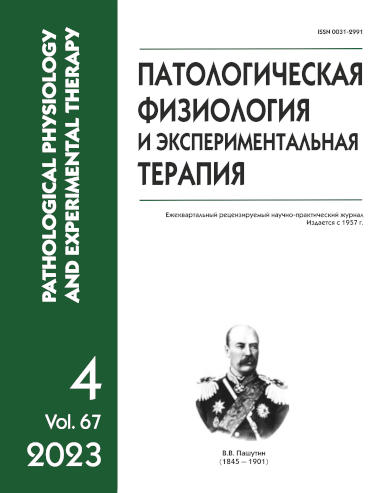Endoplasmic reticulum stress, control of extracellular proteostasis, and innate immunity in the pathogenesis of Alzheimer’s disease
Abstract
The adaptive potential and survival of cells under stressful conditions depend on their ability to control the native state of proteins, i.e., to maintain intracellular and extracellular proteostasis. This is achieved through the expression of pro-adaptive genes, including chaperones, components of the protein degradation system, etc. In Alzheimer’s disease, the accumulation and aggregation of beta-amyloid in the extracellular space, as well as intracellular condensation of tau protein, impair proteostasis. In response to the disruption of proteostasis, a complex set of responses is initiated, including the cellular stress response and innate immune pathways. Chronificaton of cellular stress leads to the development of a stress-induced cellular senescence phenotype and initiation of proinflammatory reactions that further damage tissues. This review describes possible mechanisms underlying disturbances in proteostasis in Alzheimer’s disease, as well as compensatory reactions, such as cellular responses to unfolded proteins, the participation of extracellular chaperones, phagocytic activity of microglia, and the functioning of the glymphatic system. The development of proteotoxic stress with activation of innate immunity and cellular senescence is also considered. Alzheimer’s disease is a typical example of an age-associated disease, in which the listed processes intersect and develop dynamically as determined by genetics and by external factors. Similar pathogenetic mechanisms can also manifest themselves in a number of age-associated diseases.






